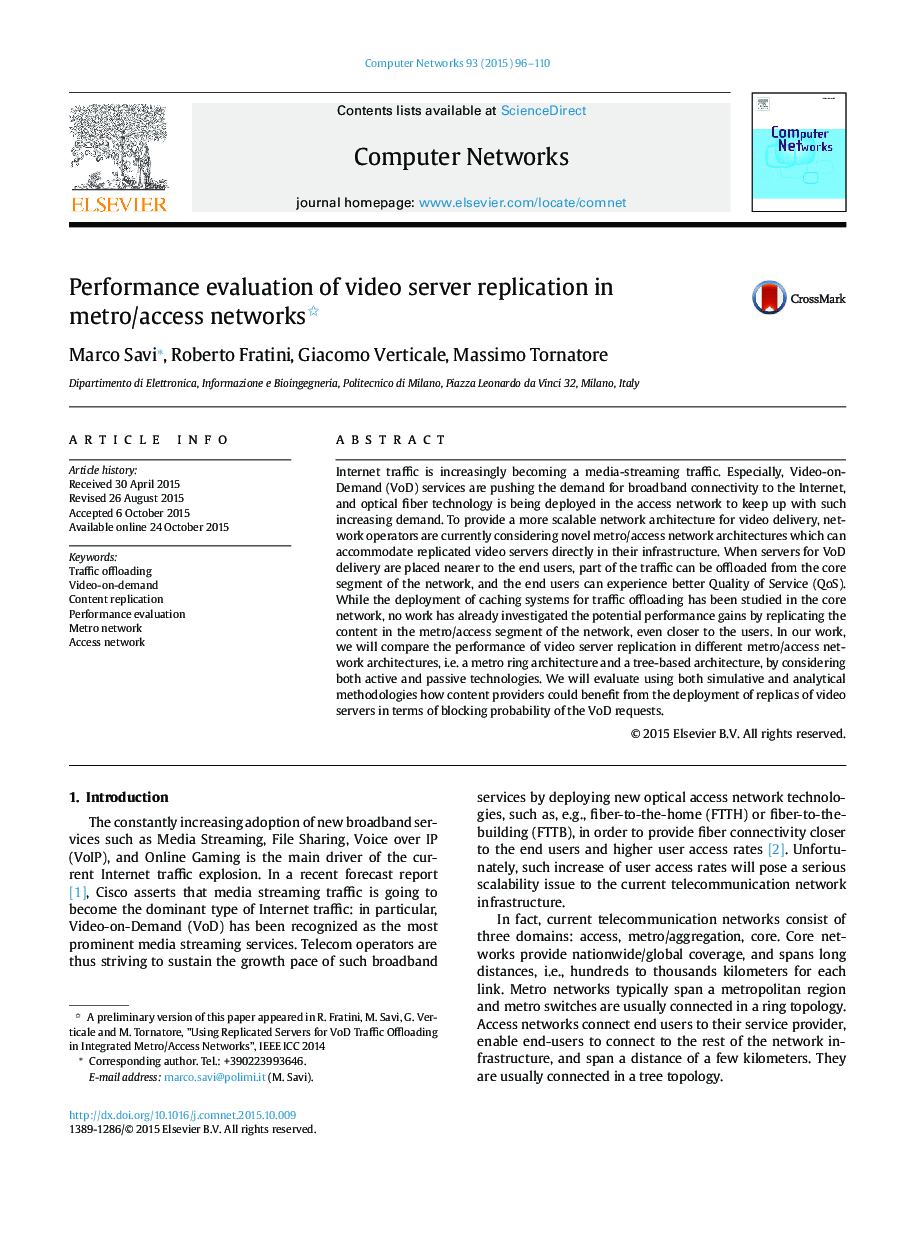| Article ID | Journal | Published Year | Pages | File Type |
|---|---|---|---|---|
| 10339072 | Computer Networks | 2015 | 15 Pages |
Abstract
Internet traffic is increasingly becoming a media-streaming traffic. Especially, Video-on-Demand (VoD) services are pushing the demand for broadband connectivity to the Internet, and optical fiber technology is being deployed in the access network to keep up with such increasing demand. To provide a more scalable network architecture for video delivery, network operators are currently considering novel metro/access network architectures which can accommodate replicated video servers directly in their infrastructure. When servers for VoD delivery are placed nearer to the end users, part of the traffic can be offloaded from the core segment of the network, and the end users can experience better Quality of Service (QoS). While the deployment of caching systems for traffic offloading has been studied in the core network, no work has already investigated the potential performance gains by replicating the content in the metro/access segment of the network, even closer to the users. In our work, we will compare the performance of video server replication in different metro/access network architectures, i.e. a metro ring architecture and a tree-based architecture, by considering both active and passive technologies. We will evaluate using both simulative and analytical methodologies how content providers could benefit from the deployment of replicas of video servers in terms of blocking probability of the VoD requests.
Keywords
Related Topics
Physical Sciences and Engineering
Computer Science
Computer Networks and Communications
Authors
Marco Savi, Roberto Fratini, Giacomo Verticale, Massimo Tornatore,
